#anatolian
Text
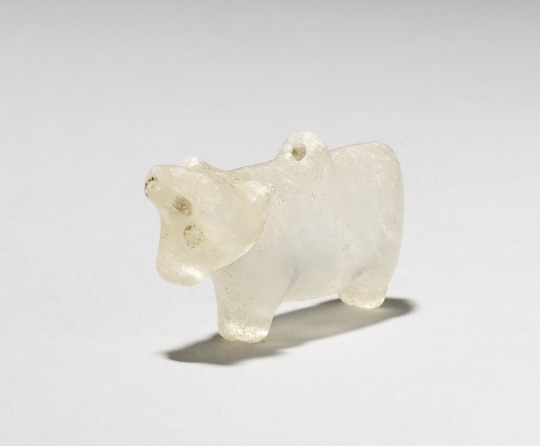
Bull Figurine or Amulet
Anatolian, 2nd millennium BCE
This protective amulet would have been worn around the neck.
59 notes
·
View notes
Text
Time Travel Question : Medievalish History 8 and Earlier
These Questions are the result of suggestions from the previous iteration.
This category may include suggestions made too late to fall into the correct earlier time grouping. Basically, I'd already moved on to human history, but I'd periodically get a pre-homin suggestion, hence the occasional random item waaay out of it's time period, rather than reopen the category.
In some cases a culture lasted a really long time and I grouped them by whether it was likely the later or earlier grouping made the most sense with the information I had. (Invention ofs tend to fall in an earlier grouping if it's still open. Ones that imply height of or just before something tend to get grouped later, but not always. Sometimes I'll split two different things from the same culture into different polls because they involve separate research goals or the like).
Please add new suggestions below if you have them for future consideration. All cultures and time periods welcome.
#Neolithic#Anatolian#Ancient World#Bible#Isaiah#Prophets#Phoenicians#Proto-Ancient Religion#Pre-Mamluk#Hinduism#History of Religion#History of India#Middle Ages#Religious History#The Pictish Beast#Picts#History of Music#Cathedrals#1000 BCE#Ancient Israel#Slavic People#100 BCE#Petroglyphs#Paleolithic
55 notes
·
View notes
Text
Experts have unlocked an unknown episode of ancient Hittite history from the inscriptions of a 3,300-year-old clay tablet, which was discovered in central Turkey in 2023. This palm-sized relic narrates a gripping tale of foreign invasion, civil war, and divine prayers, shedding light on a tumultuous era in the Hittite Empire's past.
29 notes
·
View notes
Note
Could you talk more about agdistis? It seems they're a deity who is considered nonbinary which 😳 i can't believe I haven't come across them before!! What are their celebrations like, esp from a queer point of view? (I'm @arkefthos, this is my main)
oh MAN YES LET'S GET INTO IT
Agdistis is an entity from Phrygian and Anatolian mythology - adjacent to and overlapping with the Greek pantheon. if you are familiar with the goddess Cybele, Agdistis can be considered either her child, an aspect/epithet of her, or a piece of her that was cracked off by a traumatic event. my experience is mostly with that third way.
Agdistis is described using some fucked up language in the myths, but we could consider them bi-gendered, intersex, trans, nonbinary, or bi-sexual in the sense of their physical body having both "male" and "female" secondary sex characteristics. any of those modern terms would be correct, I think (and here I use "trans" in the sense popularized by Leslie Feinberg, Kate Bornstein, and their contemporaries, as opposed to the more popular usage among younger folks today - anyone who transgresses binary gender).
primary sources on Agdistis include Arnobius and Pausanias. their language around this entity is super dehumanizing, so be aware of that going in. the myths tell stories that overlap and diverge, some making Agdistis an independent goddess, some making them an alter ego of Cybele, etc, as I mentioned above.
@flamingkorybante (aka Rocket) and I first encountered Agdistis in the (foundational, and dated but still valuable) book Hermaphrodeities by Raven Kaldera in... 2015? when the two of us worked with maybe six other ritualists to call in a variety of trans(ish) deities and let the attendees of the ritual interact with them for healing and affirmation. it was a hell of a ritual, and Rocket has detailed the months that followed that ritual. (here's a Drive link to the PDF of that book.)
as of now Rocket and I are building up a pretty simple mystery cult around Agdistis and their story, especially their sexy-madness rampage across the Mediterranean region and their subsequent death at the hands of Dionysos.we have not come across any historical evidence of them having a proper cult in ancient times. as a result, this work relies heavily on divination which makes it very likely that others will have different interpretations of them them than we do! they are a complex being with a serious trauma history alongside a LOVE of partying.
so the process of figuring out their celebrations is a beautiful and joyful work in progress! here are some things we do.
there are three main festivals when we devote attention and activities to Agdistis: Anthesteria around February, the Friday of NYC Pride (the Drag March) in June, and @trans-rite in November
we consider them an ancestor and honor them alongside our other queer and trans ancestors of spirit
we make offerings on the full moon (the moon itself does not seem super significant, but it is a nice recurring schedule) - they do not seem picky about what we offer, but particularly like almonds, mugwort smoke, pine, and sweets. their favorite is if you cry and shout and share your bad feelings with them so they can eat them
there is a short poem in Latin that we refer to as "the couplet," which can be used to invoke them, or to offer a trigger or painful emotion to them: "Dea, Magna Dea, Cybebe, Dea Domina Dindymi, demitte me tuo furor parvu, obsecro, ut furor magnum pertransit me." It calls to Agdistis's Mother and translates to "Goddess, Great Goddess, Cybele, Lady Goddess of the Mountain, visit your small madness upon me, I pray, that the Great Madness may pass me by."
they also really like to be invoked on your way into a party!
we are working with @dionysiandevotee to schedule an AMA about Agdistis and the Agdistine Order over on Reddit sometime in the next month, so if that's a platform you use, keep an eye out.
finally, if you like, here is the essay on Agdistis that Rocket and I wrote in 2018. the daemon has calmed down with us a little since then but they can be INTENSE. please take care, the essay talks a lot about sexual assault and transphobic violence in the context of both mythology and modern life.
this response was probably more than you bargained for. good luck and have fun! reach back out if you have any questions.
94 notes
·
View notes
Photo

Plaque of the Goddess Cybele, Roman, 2nd 3rd century CE
429 notes
·
View notes
Photo

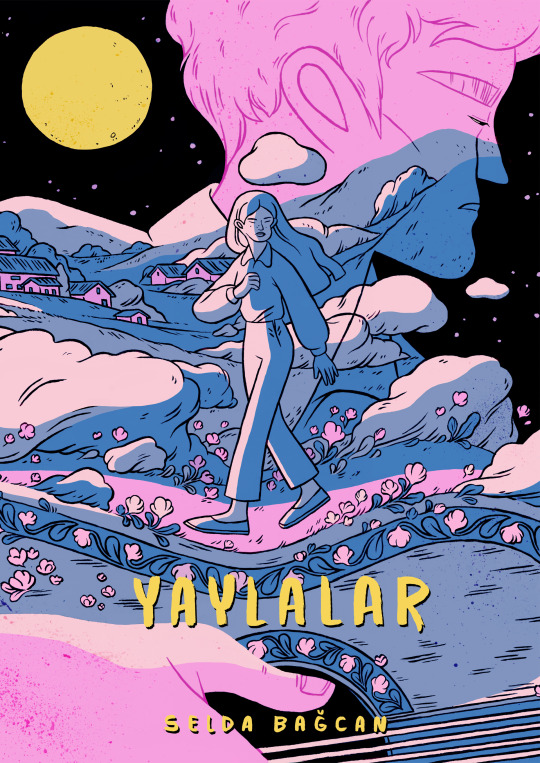
“Yaylalar” by Selda Bağcan for Anatolian Rock Revival Project
https://www.youtube.com/watch?v=_LEuvYxj2_U
(Screen and poster version)
©2022, Kirsten Rothbart
#anatolian#anatolian rock revival#illustration#psychedellic#Vinyl Records#selda bağcan#yaylalar#artwork#rock#illustrator#illustrasyon#illustrazione#illustracao#dessinee#Aesthetic#70s#70s music#kirsten rothbart
82 notes
·
View notes
Text
The best-known of these Anatolian cities is Çatal Hüyuk, excavated by James Mellaart in the 1960s. This complex town, a ceremonial center for the Goddess religion, flowered between 6500 and 5650 B.C. Çatal Hüyuk was very large for its day, 30 to 35 acres in extent. Twelve successive layers have been excavated, and no signs of warfare or weaponry have been found. There are also no signs of animal slaughter within the town, though there are murals depicting the old ritual of the hunt. The people were peaceful agriculturalists, mostly vegetarian. Çatal Hüyuk was situated near the obsidian trade routes, and was a major trading center for grains and probably also religious icons. Women's skills as gardeners and agriculturalists are manifest here; the presence of numerous querns, mortars, pounders, grinders, storage pits, and sickle blades shows a growing abundance of food. And burial sites containing luxury objects indicate a surplus of goods and therefore trade—there are many obsidian objects and cowrie shells (Goddess symbols) from coastal regions.
At Çatal Hüyuk, the most honored burials were of women and children. Before burial, bodies were exposed so their bones could be picked clean by vultures, the sacred bird of the Death Goddess. Women and children were buried in central graves directly under the sleeping platforms inside the houses, with signs of ritual respect and love, amulets and icons, obsidian mirrors and toys, buried with them; men were buried in smaller corner sites, never with children, and with their Stone Age hunt weapons.
-Monica Sjöö and Barbara Mor. The Great Cosmic Mother: Rediscovering The Religion of the Earth.
16 notes
·
View notes
Text
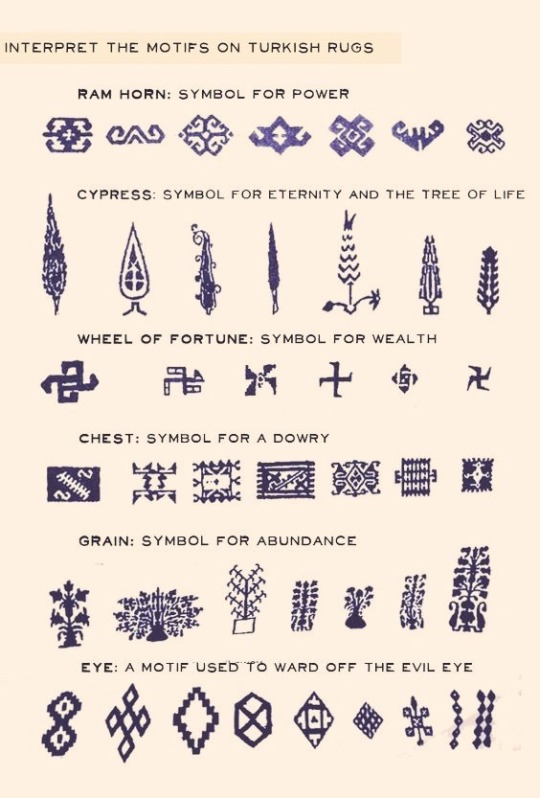
🪬
#turkic#turkic culture#turkish#anatolia#middle asia#culture#turkish rugs nz#alıntı#art#aesthetic#sanat#kilim#anatolian#anatolian turks#blue
15 notes
·
View notes
Photo
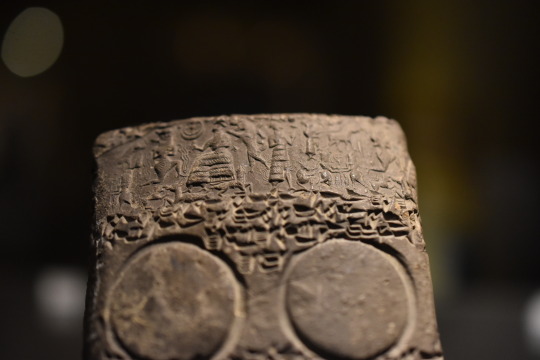


Silindir mühürlü çivi yazısı kil tabletler
Asur Ticaret Kolonileri, Kültepe, Kayseri, Türkiye M.Ö. 19-17.yy
Ankara Anadolu Medeniyetleri Müzesi
Terracotta cuneiform tablets with cylinder seal
Assyrian Trade Colonies, Kültepe, Kayseri, Türkiye 19th-17th Century B.C
Ankara Anatolian Civilizations Museum
#cuneiform#terracotta#assyrian#terracotta tablet#anatolian ancient#anatolian#anatolian civilizations#archeology#Arkeoloji#ancient#antik#anadolu#antik anadolu
9 notes
·
View notes
Text
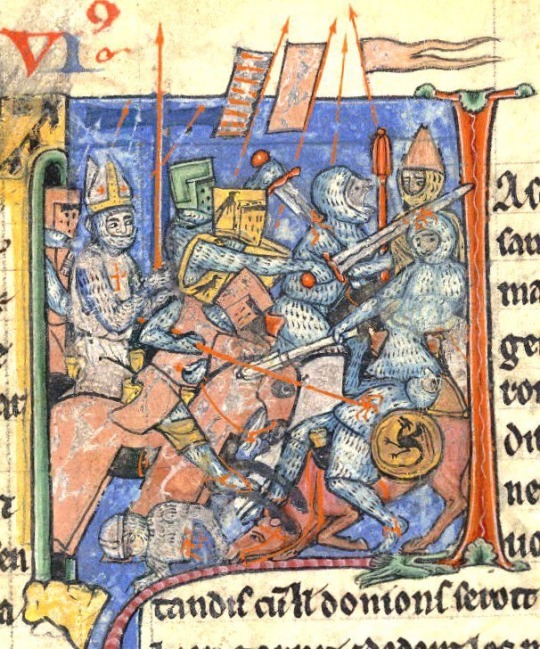

The Holy Lance held by Adhémar du Puy before Antioch.
Adhémar de Monteil (Adhémar du Puy) chargeant les Sarrazins en brandissant la Sainte Lance d'Antioche. Enluminure médiévale.
A 13th-century depiction of battle outside Antioch from William of Tyre's Histoire d'Outremer, in the care of the British Museum.
#medieval#armour#knights#crusaders#crusades#holy lance#antioch#battle of antioch#first crusade#1098#histoire d’outremer#william of tyre#adhémar du puy#adhemar of le puy#holy relic#europe#france#anatolian#anatolia#christian#christendom#european
43 notes
·
View notes
Text

Turkish woman, Turkish Republic, 1930.
5 notes
·
View notes
Quote
Hittite prosperity was mostly dependent on control of the trade routes (Cilician gates with Mesopotamia) and metal sources

Egyptian pharaoh Ramesses II storming Hittite fortress of Dapur
#hittite#mesopotamia#cilicia#anatolia#syria#prehistory#bronze area#destruction#ruin#trade#silk route#history#ancient history#ancient civlizations#ancient civlization#archaeology#genetics#ancient genetics#ancient dna#anatolian#egyptian#ramesses
3 notes
·
View notes
Text
A latest genetic study has put forth stunning revelations of the world’s oldest Alpine celebrity, Ötzi the Iceman, uncovering surprising attributes of the famous mummy – dark skin and eyes and male pattern baldness.
59 notes
·
View notes
Text
[...P]rior to 4500 B.C. (the onset of the Bronze Age), widespread cultural uniformity throughout Europe and Western Asia centered on the worship of a great-goddess figure, first in the form of a Mistress of Wild Animals (often depicted as androgynous or hermaphroditic) and later, after the invention of agriculture, in the form of a Grain Goddess. Commonly associated with this Great Goddess, especially after 7000 B.C., was a subordinate male deity, often depicted in the form of a bull or a horned figure.
Arthur Evans, “The God of Ecstasy: Sex Roles and the Madness of Dionysos,” 1988
#arthur evans#books#minoan#phrygian#anatolian#deities#horned#mother#androgyny#trans#this maps so fascinatingly onto the stuff we're doing with the agdistine order#like... so directly#we thought it was greek shit we were into and turns out it's minoan#colonizers! oy!
17 notes
·
View notes
Text
The new shedding blade is dog approved!

5 notes
·
View notes
Text

Giant Anatolian Malaklı Shepherd Dog
2 notes
·
View notes